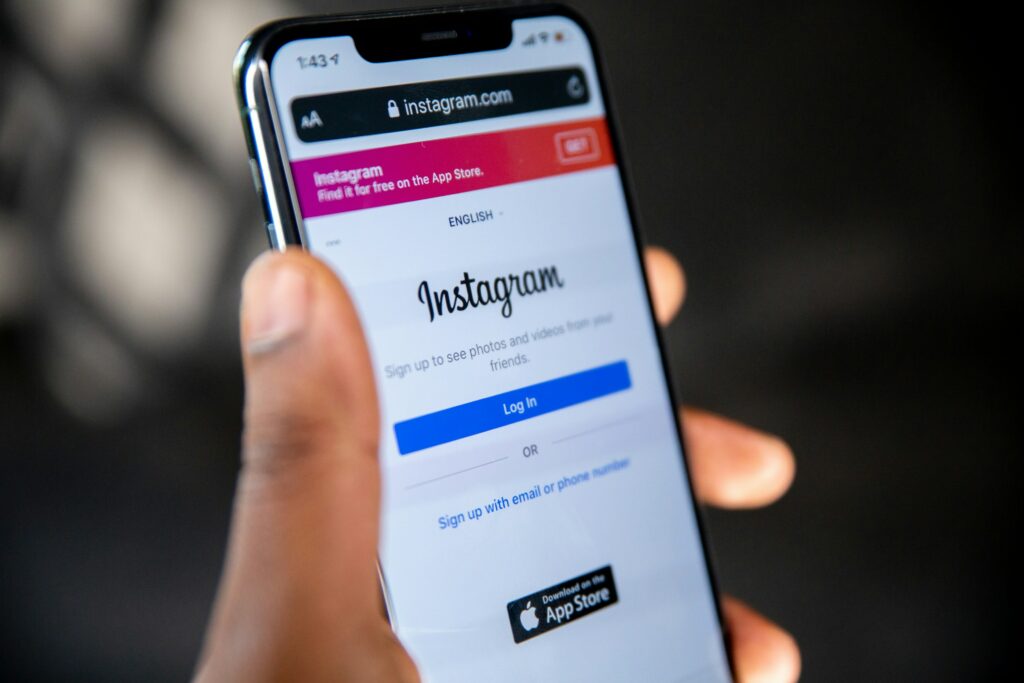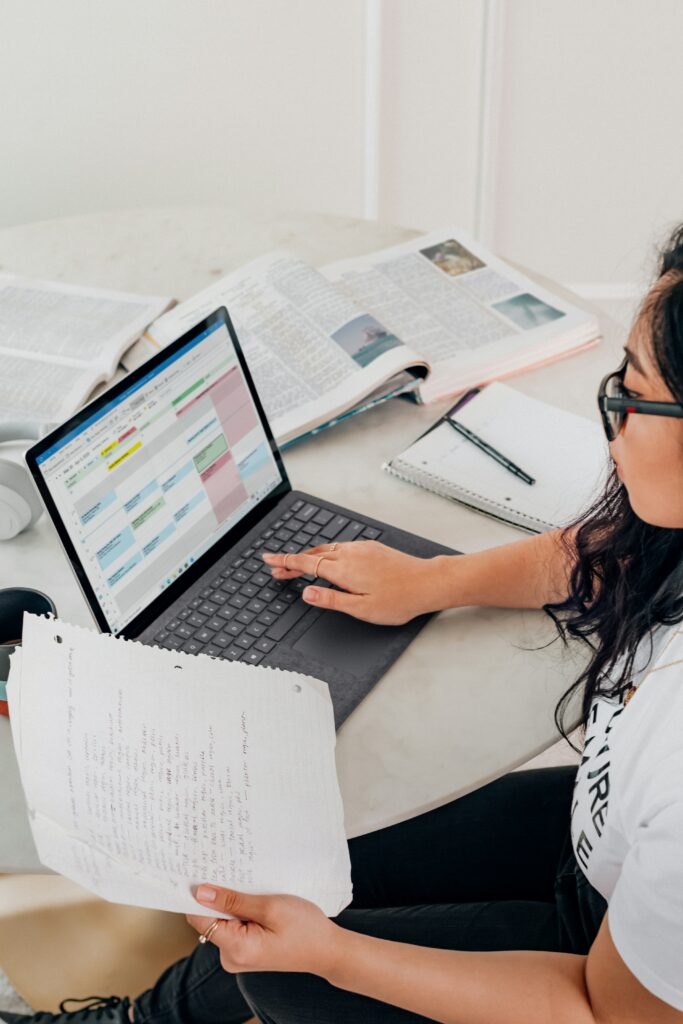Hi! I enjoyed reading your blog post this week. Identifying and addressing potential barriers to the interactive resource, such as privacy concerns, shows attentiveness to user privacy, comfort, and security. I think it’s a great idea to give learners the option to not create a public account if they don’t feel comfortable, instead, these users can focus on navigating the privacy settings in more depth. I also like how you used transportation as an analogy for universal designs in engineering. The bus audios and visuals ensure those with accessibility impairments are able to understand the same as those without impairments. This analogy helps to demonstrate how important it is for us to have visual and audio recordings incorporated into our interactive learning design.
Month: July 2024
How will your interactive learning resource specifically ensure that the needs of all learners can be met?

Our interactive learning resource is based around a step-by-step guide to using Instagram. It’s designed to meet the needs of diverse learners by incorporating Universal Design for Learning (UDL) principles. These principles ensure that educational learning resources are accessible and effective for students regardless of their specific learning styles (CAST, 2024). To address UDL principles and needs, we will be including multiple means of representation. On WordPress’ user-friendly interface, we will provide learners with a simple step-by-step guide to using Instagram that is accessible to users of all ages. It will include inclusive language, visuals, and audio tutorials to cater to different learning preferences. Learners will also be able to demonstrate their understanding of Instagram through various methods, such as quizzes, reports, and reflective journals. Our resource will also include multiple means of engagement, we will incorporate activities that are relevant and engaging for learners. Such as creating an Instagram account and adjusting privacy settings. The multiple forms of assessment, instructions, and demonstrations allows diverse learners to participate in the step-by-step guide.
How can you adjust your planned learning activities to meet the needs of your learners if an unexpected event occurs? For example, if a pandemic arises, and many students must now work from home – how will you ensure that they can still learn successfully? What training will they need, and how will you deliver it, knowing they must remain at home?) This is a common discussion thread right now, as many schools and universities have made the switch to teaching online.
In the case of unexpected events, such as another pandemic that forces learners and teachers to work from home, our resources are flexible enough to adapt to changing learning situations. Our interactive learning design already takes place online through platforms such as Moodle and WordPress, allowing learners to access information from any online device at any time. To ensure learners can learn successfully, we would provide more online support within our interactive learning design. This would include an option for virtual office hours, discussion forums for learners to ask questions, and receiving advice and support from teachers and other learners.

Choose one (or more) of your planned learning activities from your Blueprint and identify any barriers to student success. How can you alter or adjust your current plan to reduce those barriers?
A barrier to our learning activity: exploring privacy settings, is a lack of understanding around digital literacy and technological skills. Since all learners do not have the same digital literacy understanding, it’s important for them to be able to ask questions to instructors face-to-face on platforms like Zoom. To adjust our current plan, I would include office hours where learners can ask instructors questions on how to explore privacy settings in real time. Instructors would be able to guide learners through the process of exploring privacy settings and help them with any bumps in the road they are facing. I would also include a discussion forum where learners can ask other learners and instructors advice and questions about how to complete the step-by-step guide.
Consider the learning environment for your current design. What potential barriers can be reduced or eliminated to provide more pathways for learner success?
To ensure digital content is available to users with disabilities, using alt text for images and providing transcripts for videos will ensure learners are more compatible with the learning environment. Additionally, offering instructions in multiple languages will allow non-English speakers to engage with the interactive learning resource and understand how to use and interact with Instagram.
References:
CAST (2024). Universal Design for Learning Guidelines version 3.0. Retrieved from https://udlguidelines.cast.org
Blog Post -#2 – EDCI335 (opened.ca)
Hi Chikit,
This is a great exploration of how cooperative learning can be used to teach learners how to use Instagram. Your emphasis on peer connection and group collaboration aligns with the interactive nature of social media platforms. I like the idea of dividing tasks among group members because it allows each member to become confident in different aspects of Instagram then teach it to the rest of the group. Thanks for sharing!
Blog Post #2: Experiential Learning – EDCI 335 (opened.ca)
Hi Nayeon,
Your post does a great job of highlighting experiential learning and its different models. Your explanation of enactive, iconic and symbolic learning models is clear and practical in relation to Instagram use. I think the use of hands on material like visual aids will be a great addition to our guide to help learners engage with the material.

Experiential learning environments emphasize hands-on, meaningful learning experiences that engage learners’ senses and encourage active participation in activities. The learner in experiential learning is living through the event instead of being an observer (Dale, 1972). Common forms of experiential learning include audio recordings, videos, painting, photography, and engaging physically with material (Dale, 1969). For our interactive learning assignment, our group chose a “step-by-step guide to use Instagram.” I think this closely aligns with experiential learning for its hands-on attitude and use of Dales’ fourfold organic process as well as enactive, symbolic, and iconic learning methods.
Experiential learning helps to bridge the gap between what learners already know and what we need to learn by facilitating the “fourfold organic process” (Dale, 1969). The process includes Identifying needs, providing meaningful experiences, incorporating experiences, and applying knowledge. Identifying needs involves understanding what learners are required to achieve and where the gaps in their knowledge need to be addressed. Within our guide, users are encouraged to set specific goals related to their personal needs, such as privacy, settings, and engaging with others. These goals allow learners to help define where their weaknesses are and what they want to achieve. Dale (1969) emphasized the importance of personal meaning applied to learning experiences to engage learners. It’s important for learning experiences to consider learners’ backgrounds and stages in life to facilitate a greater understanding of Instagram. Our guide includes activities such as direct messaging which allows users to communicate with others. This may be meaningful for learners who place an importance on social connection. Dale’s framework also places importance on integrating new experiences with learners’ existing knowledge. Our guide helps learners build upon their prior social media knowledge by utilizing their experience with similar apps and applying it to Instagram. It also includes a learning sequence that builds step-by-step allowing users to integrate what they learn through the steps. The fourth part of Dale’s framework is to promote permanent learning by applying knowledge to real life contexts. We include this in our guide when users engage in practical activities on Instagram, such as making an account, following other users and posting a photo.
Experiential learning, according to Dale (1969), can be broken up into three smaller categories: enactive, iconic, and symbolic. Enactive learning refers to learning through direct physical engagement with the material. In our interactive learning assignment, we have designed a step-by-step guide to use Instagram. Learners utilize enactive learning by creating their own Instagram account as they are learning how to make one. Iconic learning refers to learning and understanding concepts through visual representations and observation (Dale, 1969). In our step-by-step guide, we will be including images demonstrating how to use the Instagram platform. These visuals will help learners conceptualize how to use Instagram without any hands on involvement, effectively utilizing iconic learning. Symbolic learning includes the use of language and symbols to represent ideas (Dale, 1969). In our step-by-step guide, we require learners to engage in discussions about privacy setting implications and write a report reflecting on the impact privacy has on social media. This allows our learners to engage with ideas and facilitates an analysis of privacy setting information.

References:
Dale, E. (1969). Audiovisual methods in teaching (3rd ed.). New York: Dryden Press.
Dale, E. (1972). Building a learning environment. Bloomington, IN: Phi Delta Kappa Foundation.
Blog Post #1: Assessment Strategies and Learning Theories – EDCI 335 (opened.ca)
Hi Nayeon!
Your blog post provides a thoughtful analysis of learner centered assessment strategies used in EDCI-335. You successfully identified several assessments strategies being used in the course such as peer feedback and collaborative group projects demonstrating your understanding. your connection of assessment activities to constructivist and cognitive learning theories was insightful and explained clearly. In the future it would be helpful to elaborate on specific examples from the course that demonstrate formative learning in assessment strategies. Additionally, you could delve deeper into constructivism and specific examples in the course that promote constructivist learning theories. To further support your points consider adding additional references after explaining what an assessment strategy or learning theory is.
Keep up the great work!
BLOG POST#1 – CONST’S BLOG (opened.ca)
Hi!
Your blog this week provided a thoughtful analysis of assessment strategies used in EDCI-335. You have demonstrated a clear understanding of formative assessment and how it is applied in the course assignments like blog posts. You have also provided clear references to week 1 & 2’s readings to support your observations demonstrating that you are engaging with course readings and applying your knowledge in your blog post. Your discussion about peer assessment highlights the importance of actively participating in work and applying critiques to future work. You made strong connections to constructivist learning theories, in the future you could consider adding behaviorist learning theories to formative assessment. Exploring how feedback impacts student learning could be expanded by providing examples of how feedback can achieve course objectives.
From what you’ve seen of the course so far, and in the course outline, which of the assessment strategies in your reading this week are being used in this course?
While looking through the course outline and the first two weeks of class I have observed several assessment strategies in this week’s readings that will be used. First off there are formative assessments being conducted all throughout this course. In formative assessments the learner receives feedback and has the opportunity to incorporate that feedback into future attempts of their work (Conrad & Openo, 2018). With each blog post we receive and provide peer reviews to learners, these peer reviews are formative because they provide the learner with feedback that can be applied to their next blog posts. Peer feedback allows students to help their peers understand what needs to be changed and in turn helps solidify their own knowledge in the subject (Hattie & Timperley, 2007). This helps to close the gap between what is known and desired knowledge. Peer feedback has been shown to be effective, this was demonstrated in the Austin’s Butterfly video. The students provided feedback to Austin about his butterfly and how he could improve and overtime he incorporated the feedback and his drawing improved. Summative assessments are also used in this course in the final group assignment. Summative assessments are a final assessment; they don’t give opportunity to incorporate feedback but are instead the end of a learning experience (Conard & Openo, 2018). This course also incorporates Authentic assessment. Authentic assessment is collaborative with shared understanding of tasks and perspectives ( Conard & Openo, 2018). Authentic assesement stimulates our pod groups in which we will work alongside other students to develop an interactive learning environment. This project demonstrates authentic assessment not only because it is collaborative but because it provides highly transferable knowledge that can be used in future workplace environments. Additionally our peer feedback and assessments being online allows for students to respond and meet on their own times. I think online group projects and assessments being online is advantageous because it is flexible allowing learners to work on their own time.
Which are not being used?
In this course I have noticed a lack of grading rubrics for the blog posts. Grading rubrics ideally tell students why an assignment is being conducted and how one can succeed at the assignment. I am a type A learner so the lack of word count and specific criteria for the blog posts has caught me a bit off guard. However, I am extremely open to the idea of these blog posts being more abstract and open ended than set to a rigorous word count which I am quite used to. There are summative assessments being done in the group assignments however there is a lack of traditional summative assessment which includes tests, quizzes, and exams (Conard & Openo, 2018). There also seems to be a lack of service learning in this class where students engage in real service outside of the classroom ( Conard & Openo, 2018).

What Learning Theories (from week 1) do these connect to?
Formative assessment used in this course connects to constructivism. In constructivist learning theories involve practical application, presentation of multiple perspectives, and collaborative learning (Ertmer & Newby, 2013). We are using peer feedback in this course, this allows for students to share multiple perspectives, co-guide each other, and apply them to their future work demonstrating formative and constructivist learning theories. Emphasis on Peer reviews also ties to Cognitivism, In cognitivism learning theories students focus on scaffolding, concept mapping, and creating mental schemas in their head ( Ertmer & Newby, 2013).By providing peer feedback in formative assessment students are able to scaffold the gap between what they understand know and what they need to understand to succeed. Students are also able to use problem solving techniques in group projects, and create hierarchical matrices to relate feedback to future blog posts, which are demonstrations of Cognitivism in learning. Peer feedback in blog posts can also demonstrate behaviorist theories of learning. In behaviorism teachers and learners work with reinforcement and feedback to develop habits for learners to perform to the best of their ability (Ertmer & Newby 2013). I’d argue that the feedback in blog posts demonstrates behaviorism because we will become conditioned to receiving feedback and applying to each future blog. I also think that constructivism is evident in our Interactive learning assignment because we are constructing our own meanings and instructions on how to complete work based on individual experience.
How does it compare to other courses you’ve taken in your studies?
Unlike EDCI-335, most classes I have taken as psychology major focus on summative assessment, which aligns most with behaviorist theories of learning. Behaviourist learning strongly aligns with observable behavior and students being a passive recipient of knowledge (Ertmer & Newby, 2013). In my psychology classes we are usually heavily tested with multiple midterms, examinations, and final papers. These are forms of summative assessment because they are a final evaluation; they don’t provide students with an opportunity to incorporate feedback but instead are provided a final grade. A lot of the classes I regularly take use behaviorist learning theories where we are assessed by measurable learning outcomes. We are often provided a grade with little to no feedback and ordinal data that doesn’t tell us where we succeeded and where we can improve. Edci-335 is different from my regular classes because it focuses on formative assessment through peer evaluations, and constructivist theories of learning through collaborative projects and social interaction.

References:
https://vimeo.com/38247060 – Austin Butterfly Video
Conrad, D., & Openo, J. (2018a). Assessment strategies for online learning: engagement and authenticity. In Assessment strategies for online learning (1st ed.). Athabasca University Press.
Ertmer, P. A., & Newby, T. J. (2013). Behaviorism, cognitivism, constructivism: Comparing critical features from an instructional design perspective. Performance Improvement Quarterly, 26(2), 43-71
Hattie, J., & Timperley, H. (2007). The power of feedback. Review of Educational Research, 77, 81–112. https://doi.org/10.3102/003465430298487
What is your preferred mode of remote communication?
My preferred mode of remote communication is Facetime videos or text messages. I think you can be very personal with facetime and texts are a way to communicate quickly and easily.
What are your communication strengths?
I am a very good active listener and am able to provide constructive criticism to others.I am also open to hear other peoples critiques and change my work along the way as needed
What are your communication weaknesses? Where would you like to grow?
Sometimes, I avoid confrontation and having serious talks with others when something needs to be solved. I think I can grow in this aspect by talking to people when there is a problem instead of letting it get too big to the point where confrontation is overwhelming.
Do you consider yourself an introvert or extrovert?
I consider myself an extrovert. I grew up surrounded by siblings and family members and I prefer to be surrounded by others than alone. I also prefer to go out and spend time with others than have a relaxing night to myself.
What time zone are you in?
Pacific Standard time zone (P.S.T.)
What time of day do you prefer doing academic work?
I prefer getting my work done in the late morning/ early afternoon.
When you are upset do you tend to share this with others or keep it to yourself?
I think I am pretty good at expressing my feelings and sharing when something is bothering me.
What do you like about group work?
I like working in groups because you get to hear different opinions and perspectives on topics that you may not have thought of on your own. It’s also amazing to be able to incorporate different skills into assignments. For example someone may be really good at art and another person really great at grammar and you can combine your skills to create the best overall assignment.
What don’t you like about group work?
Sometimes group work can be challenging if all members are not putting in the same amount of effort and time into work.
What else would you like your team to know?
I am excited to work with you all and get this course started!
What is your preferred mode of remote communication?
My preferred mode of remote communication is Facetime videos or text messages. I think you can be very personal with facetime and texts are a way to communicate quickly and easily.
What are your communication strengths?
I am a very good active listener and am able to provide constructive criticism to others.I am also open to hear other peoples critiques and change my work along the way as needed
What are your communication weaknesses? Where would you like to grow?
Sometimes, I avoid confrontation and having serious talks with others when something needs to be solved. I think I can grow in this aspect by talking to people when there is a problem instead of letting it get too big to the point where confrontation is overwhelming.
Do you consider yourself an introvert or extrovert?
I consider myself an extrovert. I grew up surrounded by siblings and family members and I prefer to be surrounded by others than alone. I also prefer to go out and spend time with others than have a relaxing night to myself.
What time zone are you in?
Pacific Standard time zone (P.S.T.)
What time of day do you prefer doing academic work?
I prefer getting my work done in the late morning/ early afternoon.
When you are upset do you tend to share this with others or keep it to yourself?
I think I am pretty good at expressing my feelings and sharing when something is bothering me.
What do you like about group work?
I like working in groups because you get to hear different opinions and perspectives on topics that you may not have thought of on your own. It’s also amazing to be able to incorporate different skills into assignments. For example someone may be really good at art and another person really great at grammar and you can combine your skills to create the best overall assignment.
What don’t you like about group work?
Sometimes group work can be challenging if all members are not putting in the same amount of effort and time into work.
What else would you like your team to know?
I am excited to work with you all and get this course started!
